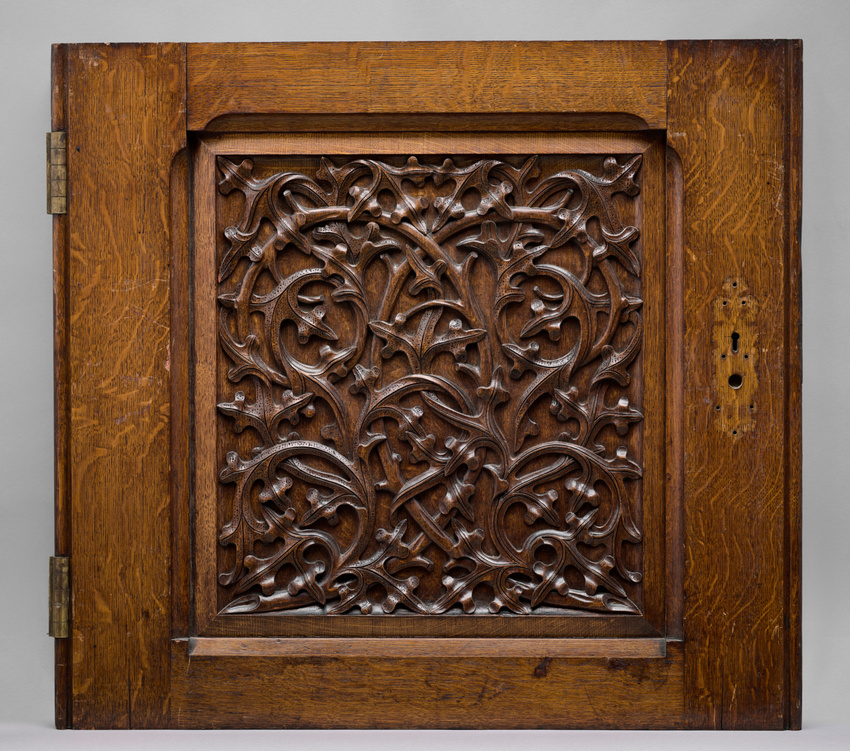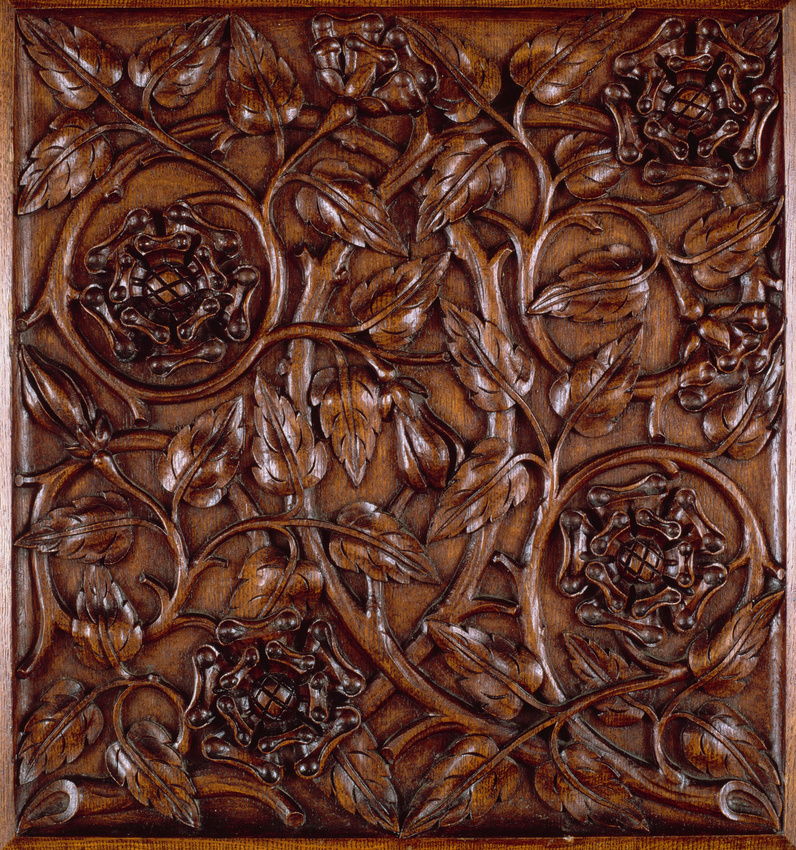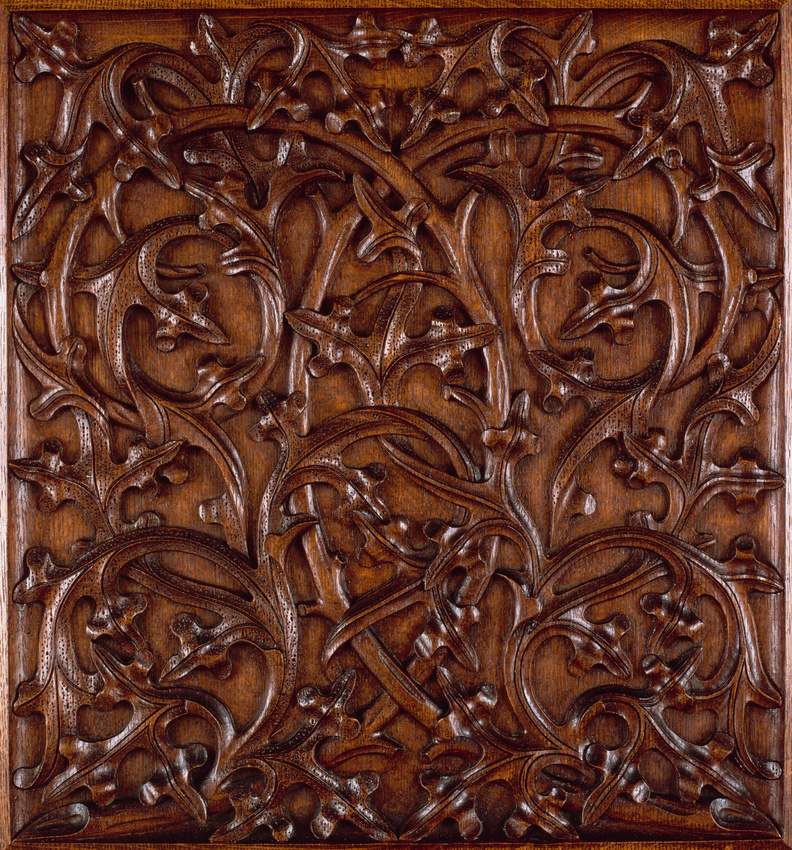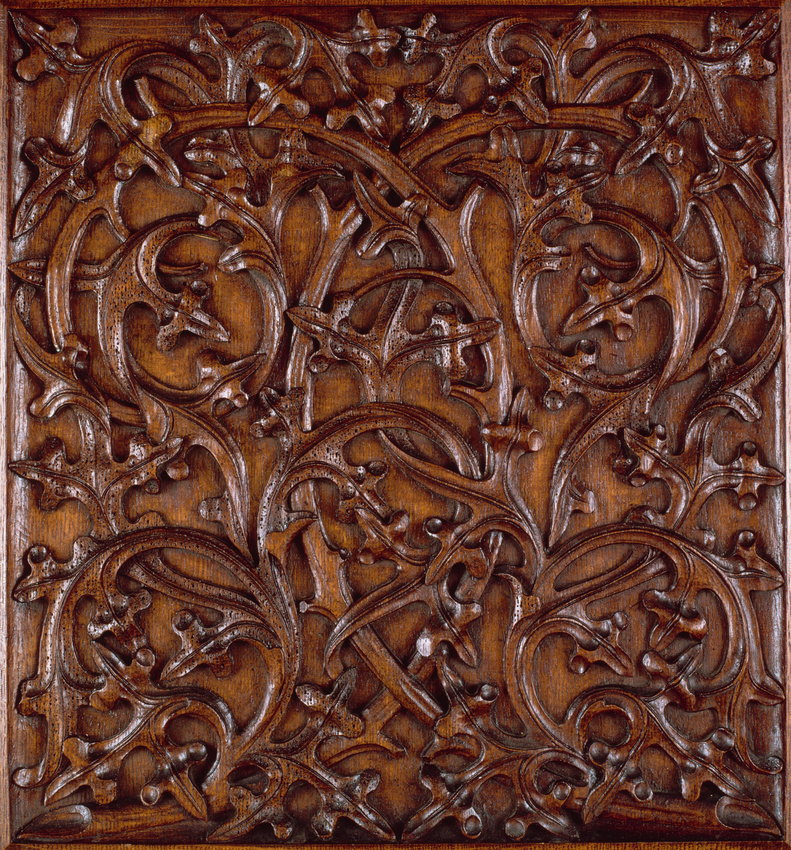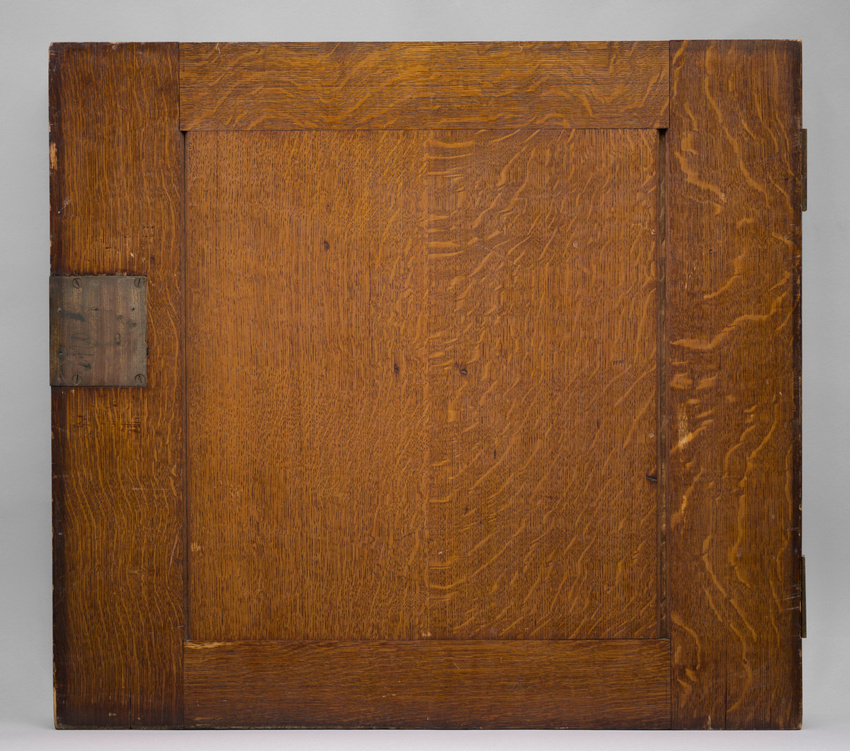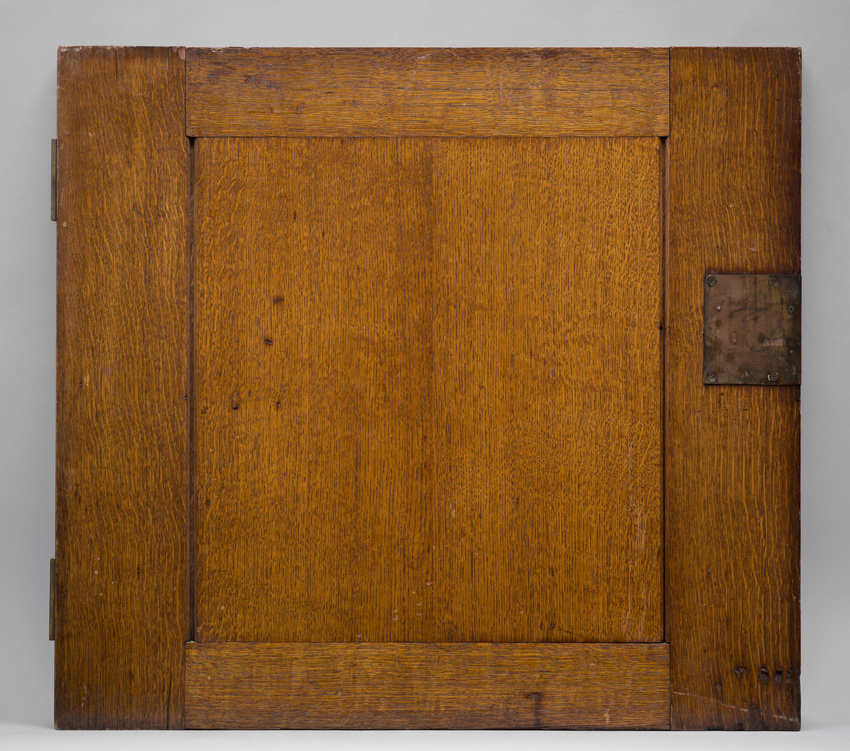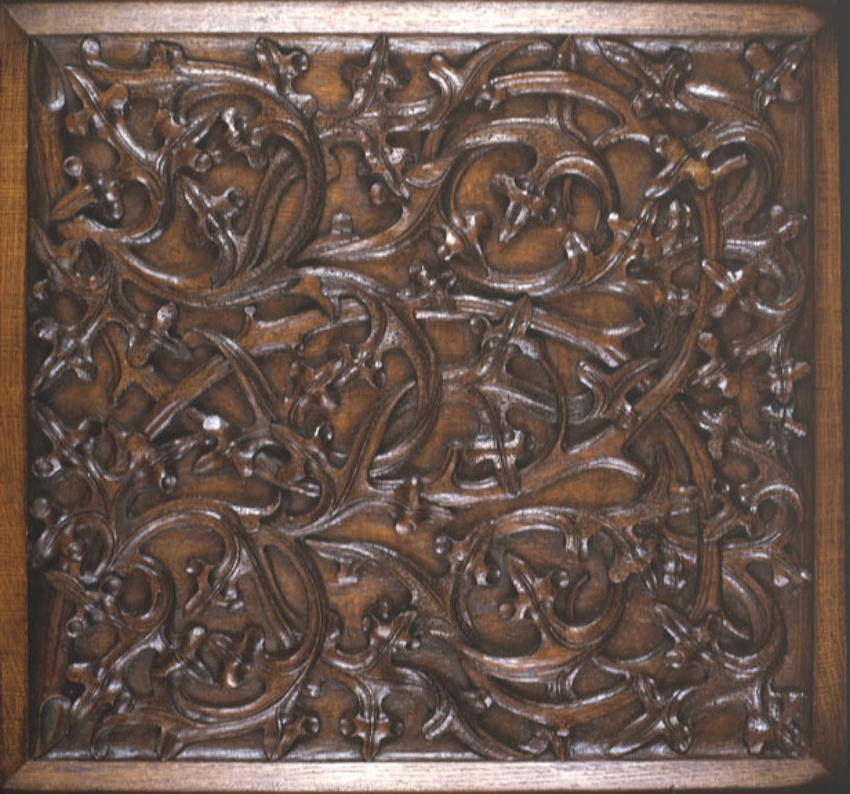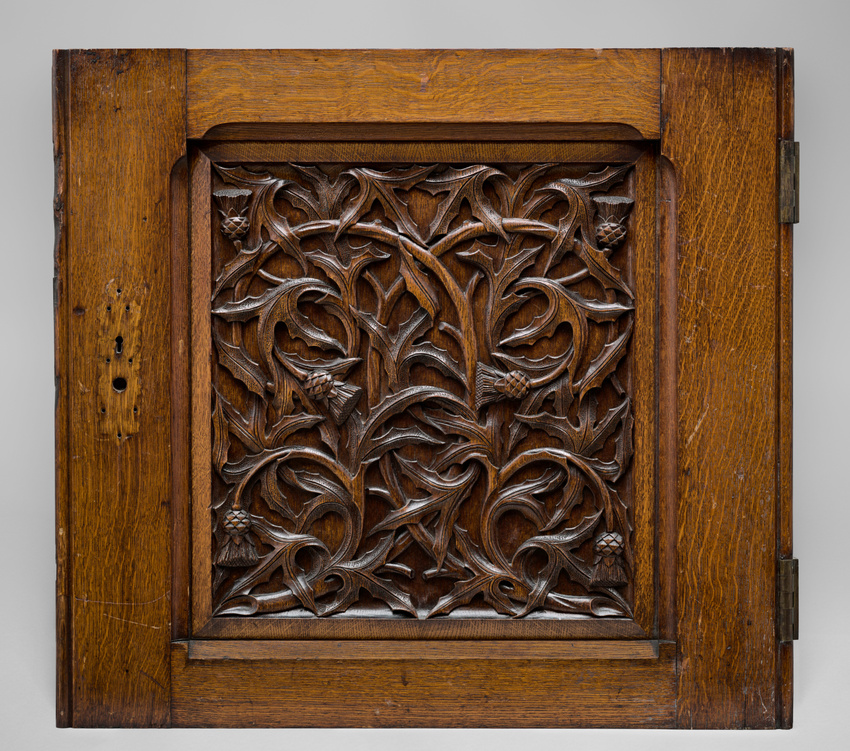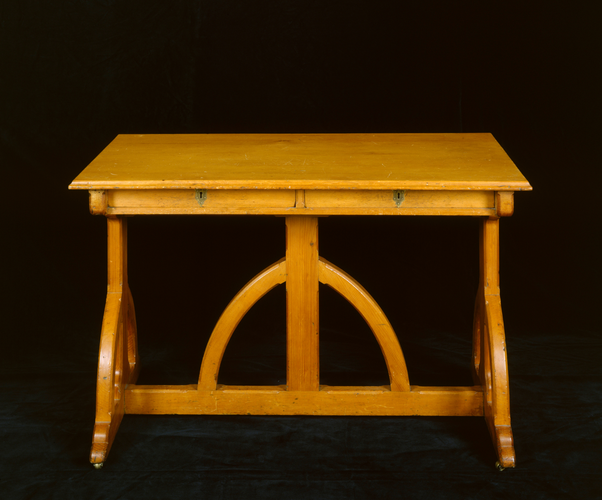Panneau de porte provenant du nouveau palais de Westminster
An architect, decorator and erudite theoretician, Pugin was the pioneer of the Gothic Revival which influenced all of Victorian England. His rediscovery of Gothic art, like the Viollet-le-Duc's in France, led him to develop a functionalist theory of architecture, a close union of art, craftsmanship and technique.
One of the largest decoration projects he was ever involved in, and without doubt the most prestigious, was that of the New Palace of Westminster, between June 1844 and February 1852. His role extended to designing the stained glass, ceramic tiles, fabrics (curtains and carpets), wallpaper and lighting, as well as organising the huge amount of carpentry and joinery required, one example of which we have here.
From December 1844, Pugin supervised all the sculptures in wood in Thames Bank Workshops. For the young craftsmen in these workshops working exclusively on this enormous project, Pugin had over two thousand casts taken of Gothic ornaments – taken mainly from St Albans cathedral and Amiens cathedral – so that they could see the exact models every day. The work accomplished by these teams was remarkable: the very vigorous sculpture is clearly very different from the smaller pieces of furniture made by other firms.
This panel, as well as three others which came into the Musée d'Orsay collections at the same time, may have come from the Sergeant at Arms' House, whose premises were completely refurbished. The emblematic, floral decoration – the rose of England and the thistle of Scotland – is a perfect example of the floral ornamentation promoted by Pugin in the 1840s.
